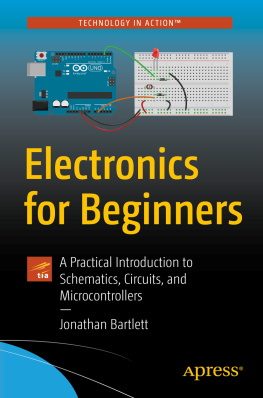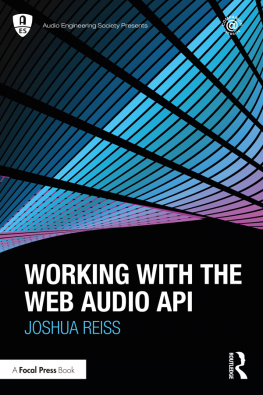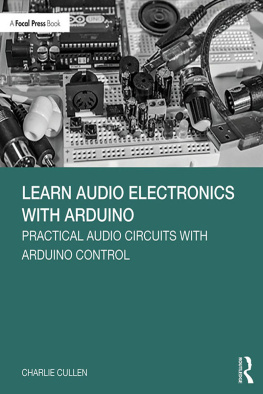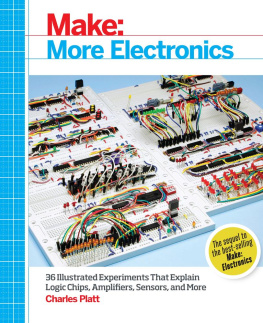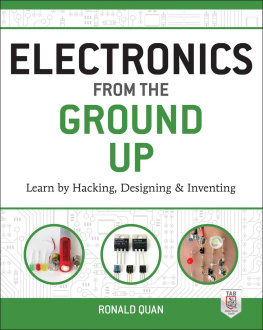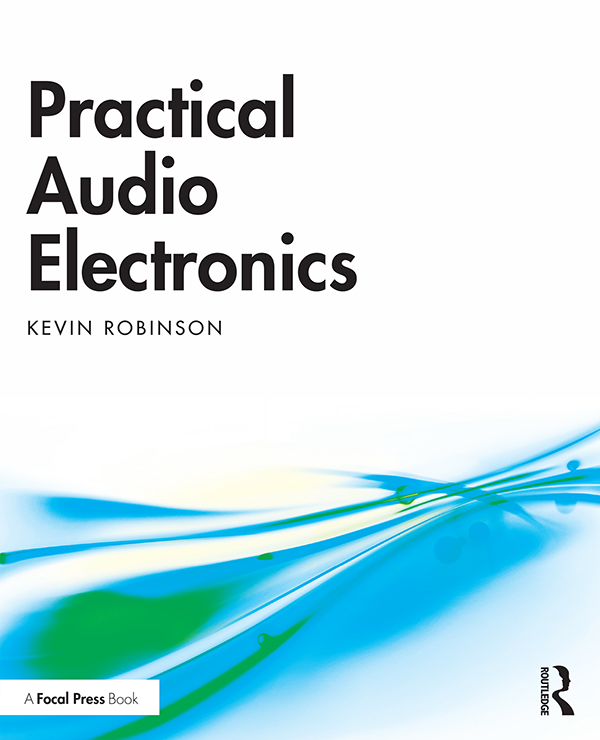
Practical Audio Electronics
Practical Audio Electronics is a comprehensive introduction to basic audio electronics and the fundamentals of sound circuit building, providing the reader with the necessary knowledge and skills to undertake projects from scratch.
Imparting a thorough foundation of theory alongside the practical skills needed to understand, build, modify, and test audio circuits, this book equips the reader with the tools to explore the sonic possibilities that emerge when electronics technology is applied innovatively to the making of music. Suitable for all levels of technical proficiency, this book encourages a deeper understanding through highlighted sections of advanced material and example projects including circuits to make, alter, and amplify audio, providing a snapshot of the wide range of possibilities of practical audio electronics.
An ideal resource for students, hobbyists, musicians, audio professionals, and those interested in exploring the possibilities of hardware-based sound and music creation.
Kevin Robinson is a degree-qualified electronics engineer who also holds diplomas in electronic music production and live sound engineering. He has taught electronics and audio technology on various diploma- and degree-level sound engineering courses, and also works as a live sound engineer.
First published 2020
by Routledge
2 Park Square, Milton Park, Abingdon, Oxon OX14 4RN
and by Routledge
52 Vanderbilt Avenue, New York, NY 10017
Routledge is an imprint of the Taylor & Francis Group, an informa business
2020 Kevin Robinson
The right of Kevin Robinson to be identified as author of this work has been asserted by him in accordance with sections 77 and 78 of the Copyright, Designs and Patents Act 1988.
All rights reserved. No part of this book may be reprinted or reproduced or utilised in any form or by any electronic, mechanical, or other means, now known or hereafter invented, including photocopying and recording, or in any information storage or retrieval system, without permission in writing from the publishers.
Trademark notice: Product or corporate names may be trademarks or registered trademarks, and are used only for identification and explanation without intent to infringe.
A catalogue record for this book is available from the British Library
Names: Robinson, Kevin (Electronics engineer), author.
Title: Practical audio electronics / Kevin Robinson.
Description: Abingdon, Oxon : Routledge, an imprint of the Taylor & Francis Group, 2020. | Includes bibliographical references and index.
Identifiers: LCCN 2019047479 (print) | LCCN 2019047480 (ebook) | ISBN 9780367359850 (paperback) | ISBN 9780367359867 (hardback) | ISBN 9780429343056 (ebook)
Subjects: LCSH: SoundRecording and reproducingEquipment and supplies. | Electronic circuits.
Classification: LCC TK7881.4 .R624 2020 (print) | LCC TK7881.4 (ebook) | DDC 621.389/3dc23
LC record available at https://lccn.loc.gov/2019047479
LC ebook record available at https://lccn.loc.gov/2019047480
ISBN: 978-0-367-35986-7 (hbk)
ISBN: 978-0-367-35985-0 (pbk)
ISBN: 978-0-429-34305-6 (ebk)
Typeset in CharterBT
Publishers Note
This book has been prepared from camera-ready copy provided by the author.
For Jill
and
Pigasus, the flying pig

_________________________________
The author welcomes feedback at:
The purpose of this book is to present basic electronics in an audio context. The vast majority of modern audio technology is electronic in nature. Furthermore, a growing interest in custom and circuit-bent musical instruments and equipment renders a basic level of electronics expertise ever more relevant and valuable to the modern musician, audio professional, and sonic experimenter.
Electronics can be approached at a variety of levels. As a highly academic engineering discipline it merits study in the context of a technically rigorous electronics degree, and a career of application, and deepening theoretical knowledge and comprehension.
This is not the electronics addressed here.
As a practical tool for technically minded musicians, music producers, and sonic artists, electronics can open up a world of experimentation and artistic possibilities, without the need for the depth and rigour of the professional electronics engineer. Creativity wedded to a modest but solid technical knowledge-base opens this rich world of experimentation and inspiration, expanding the boundaries to create new sounds in interesting and unusual ways.
Of the very many electronics textbooks available, few enough approach the subject from a more informal standpoint, better suited to application in less technical disciplines. For the most part they are aimed at electronics engineers, and rely on detailed technical analysis and much mathematics. Fewer still diverge from the general approach to the subject, and provide a treatment specifically focused on the audio electronics sub-specialty. This book aims to address these dual requirements, with an accessible, audio-centric presentation. It provides a relatively rigorous but easily digested treatment, with enough technical detail to allow the reader to expand their understanding, while avoiding the use of complex mathematics and analysis.
This book is aimed at the technically minded electronics non-specialist who wishes to explore circuit building and hardware hacking, without getting bogged down in electronics theory and advanced mathematics. It allows students, musicians, hobbyists, and audio professionals to develop the skills and understanding needed to engage creatively in the rich and varied hacking subculture which exists where music and engineering intersect.
The book combines this moderate level of technicality with a firm focus on the practical. The aim is to allow the reader to become an electronics builder and experimenter, understanding more than is achieved by simply following step by step circuit building tutorials, but avoiding the limiting requirements of a full technical treatment.
This brief introductory chapter outlines the broad framework adopted for the material presented in the rest of the book, and highlights some of the important features of the text. These include a number of special optional asides presenting more technical material apart from the main flow of the text. There are also numerous practical exercises providing the opportunity for a deepened understanding of the subject through guided practical work. The main body of the book is presented in three parts Electrical Theory, Practical Electronics, and Component Reference followed by a number of appendices, and closing with a bibliography and index.
is rounded off with a chapter on signal characteristics, providing some background to the key aspects of audio signals.
is concluded with a set of fully worked projects to build, including a simple battery powered amplifier, an interesting sound synthesis circuit and a useful audio effects processor all the building blocks needed to start making some noise.
Component Reference is composed of a series of chapters detailing the most important facts and figures for all the different components likely to be encountered in audio electronic circuits, including numerous applications and circuit examples throughout. The focus is on that information which can prove most useful in understanding and working with these components, while the more obscure theory aspects are kept to a minimum.
Next page

